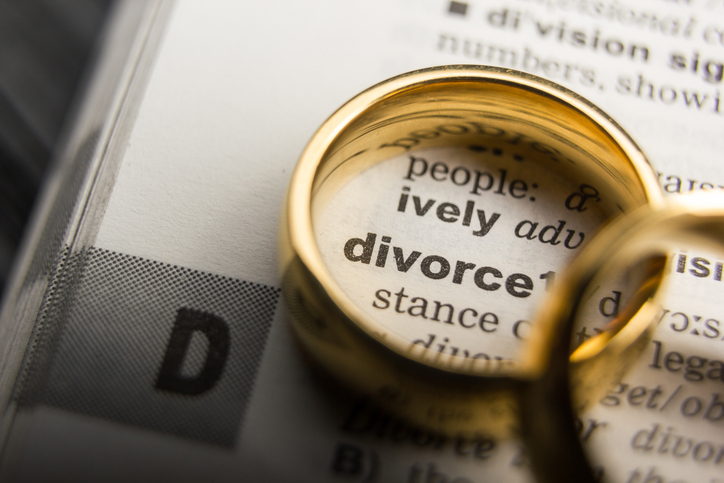When military service members or veterans divorce, their ex-partners may be entitled to receive a portion of their military pension benefits as part of the property settlement. State courts oversee the division of property, but federal law also plays a role by specifying the amount of the military pension a court may award to a non-military spouse. To get your fair share of military retirement benefits and avoid costly mistakes, consider working with a financial advisor who specializes in divorce and military pensions.
Military Pensions in Divorce
Federal law doesn’t recognize that ex-spouses have a right to receive military retired pay. Instead, it grants state courts the ability to divide military retired pay, treating it as a marital asset.
Federal law does, however, limit the amount of the military pension benefit that can be paid to an ex-spouse as part of a divorce property settlement. This figure is set at 50% of the military member’s disposable retired pay. The amount of retired pay is calculated based on the member’s rank and years of service on the date of the divorce decree. No pension pay is actually distributed until the service member retires.
While the property settlement division is capped at 50% of retired pay, a divorced retired service member may be required to contribute up to 65% of retired pay when other payment obligations are included. These additional obligations could include alimony or child support.
The 10/10 Rule

Divorced spouses of military service members may receive payments from military pensions in two ways: Either directly from the government’s Defense Finance and Accounting Service, or from the former spouse. The government will pay an ex-spouse directly if the couple was married for at least 10 years overlapping with at least 10 years of military service. This is known as the 10/10 rule.
If the 10/10 rule is met, government accountants will garnish the awarded amount of the payment from the retiree’s benefit and deliver it to the ex-spouse. Otherwise, the retirement pay goes to the retiree, who has the responsibility of distributing the money to the ex-spouse as required by the divorce court order.
The 10/10 rule affects only the manner of payment, and not the eligibility to receive benefits. Nor is there any other requirement that spouses be married for a minimum amount of time for an ex-spouse to be eligible for a portion of military retirement pension benefits.
State Rules
State rules on divorce and the division of property vary, and this remains true when it comes to dividing military pensions in divorce. In most states, only the portion of the pension earned during the marriage can be divided between ex-partners. However, some states presume an equal 50-50 division of all marital property, including military pension assets.
Because of differences between states, along with a servicemember’s mobile lifestyle, determining which state has jurisdiction is important yet sometimes challenging. Federal law grants a state court the authority to divide a military pension only if the military spouse is a legal state resident and not there because of military duty, and also that they agree to the court’s decision on pension division. Absent those conditions, a state court can’t divide military pension assets.
Other Benefits
While military pensions can be treated as an asset and divided in divorce, some payments from the military can’t be divided this way. Veterans Administration disability compensation payments, for instance, are not considered part of a military pension and aren’t subject to state divorce awards. Similarly, disability pay for disabilities acquired during service are usually not divisible, either.
Some non-monetary benefits can be affected by divorce. For example, an ex-spouse can retain a military ID, medical benefits and access to post exchanges for life if the couple was married for at least 20 years including 20 years of military service. Remarriage and taking a job with health insurance benefits can cause these benefits to terminate, however.
Generally speaking, the landscape of divorce and military pension benefits is complex. Considering the interplay of federal laws, state divorce laws and individual circumstances, military members involved in divorce often turn to attorneys and other professional specialists in the area.
Bottom Line

How a military pension will be divided after divorce is largely determined by state laws, but federal restrictions come into play. Typically, no more than 50% of the value of a military pension can be awarded to a former spouse of a retired service member. While there’s no minimum length of time a couple must be married for one to be eligible for a portion of military pension benefits, the length of the marriage can determine whether the government pays the ex-spouse directly or the retiree receives benefits and is responsible for paying the former partner.
Retirement Tips
- A financial advisor can help protect your financial interests and create a plan for your future needs and goals. Finding a financial advisor doesn’t have to be hard. SmartAsset’s free tool matches you with up to three financial advisors in your area, and you can interview your advisor matches at no cost to decide which one is right for you. If you’re ready to find an advisor who can help you achieve your financial goals, get started now.
- SmartAsset’s Retirement Calculator tells you how much to be saving now in order to be financially set for retirement when the time comes.
Photo credit: ©iStock.com/bymuratdeniz, ©iStock.com/Photographer and Illustrator, ©iStock.com/Vimvertigo
